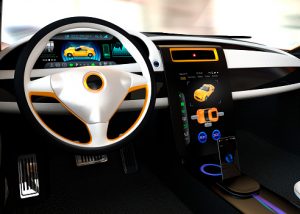 For those of us who haven’t been hermits stuck in a remote section of Middle Earth, The Lord of the Rings book and movie series brought to our awareness the mythical powers of The One Ring: An object with a sinister inscription that reads “One Ring to Rule Them All.” The ring bearers’ powers will allow s/he to rule all lands and all people -- yet this piece of jewelry will enslave the poor ring bearer (life’s full of trade-offs, right?). It’s too good to be true -- “slip the ring on your finger and you’ll rule the world!” Now that’s convenience (for those whose ego is beyond measure).
For those of us who haven’t been hermits stuck in a remote section of Middle Earth, The Lord of the Rings book and movie series brought to our awareness the mythical powers of The One Ring: An object with a sinister inscription that reads “One Ring to Rule Them All.” The ring bearers’ powers will allow s/he to rule all lands and all people -- yet this piece of jewelry will enslave the poor ring bearer (life’s full of trade-offs, right?). It’s too good to be true -- “slip the ring on your finger and you’ll rule the world!” Now that’s convenience (for those whose ego is beyond measure).
So back to reality. Products or devices bringing convenience and ease to us offer huge value. With technology, many of our products are connected to the internet and other objects in order to realize this convenience. For example, if you’re running low on Burt’s Bees lip balm or Gillette razors, use Amazon’s Dash Button. It’s e-commerce taken to a whole new level of simplicity. At the press of a button on a device, an online order is automatically made for the product you’re depleting by way of connecting the Dash Button to your Amazon Prime account. Or how about Apple’s Siri? Press the home key on your iPhone and ask “what is the score of the Manchester United football game right now?” Siri searches the internet and gives you an answer. Simple, right?
These examples amplify three points:
#1: we expect connected products or connected features to be simple to use,
#2: we expect them to deliver results instantaneously, and
#3: we expect them to be an accessible part of our everyday life.
Now imagine you’re an engineer focused on the user interface design of the console or dashboard for a new car, truck or piece of operable machinery. How do you satisfy the “one button” trick to help solve the menu and button configuration dilemma on the vehicle dashboard? Because NOT solving this problem causes user experience and safety issues (confused, frustrated, and distracted driving or operations). How many touches are too many on an in-dash flat screen so you can increase the temperature in your car? What menu or sub-menu do you go to in order to display your average fuel economy bar chart? Should the navigation map be adjacent to the menu tile getting you to your music? Furthermore, can you provide benefits in the dashboard design to present content based on what you are doing at the moment? Example: your truck knows you’re the driver so your favorite radio station is activated before you pull into reverse. But once you are moving, the temperature setting controls are automatically presented since it’s learned your pattern of frequently changing the temperature while driving.
Let me add a fourth expectation when we use connected products:
#4: we want them to work for us based on knowing what we're doing in the moment.
Recently, I attended the TU-Automotive conference and heard automotive manufacturers discuss using machine learning approaches to solve this very dilemma. More specifically, they’re trying to present contextually-relevant displays in a dashboard. One of the luxury automakers seeks to help you shorten the time you spend completing routine tasks inside the vehicle. Such as …
- … pre-loading likely destinations in your navigation system for THAT MORNING. By letting your calendar inform your navigation system so it considers and presents a likely set of destinations for you to easily choose, you can submit your driving route more quickly.
- … showing a dynamically relevant set of menus or buttons on the dashboard that you need in a particular moment (as opposed to the same, fixed displays).
Examples like this are common yet challenging problems to solve. One reason I chose to move into the automotive group at SAS is their proven approaches and experience with applying machine learning techniques to help these situations. The inner nerd in me appreciates the fact that data and business analysts can ease the burden of drivers so they better enjoy rich features in their vehicles. I relate this problem to Hans Hofmann’s quote: “The ability to simplify means to eliminate the unnecessary so that the necessary may speak.”
“Machine learning is a branch of artificial intelligence that is concerned with building systems that require minimal human intervention…to learn from the data and make accurate predictions.” -SAS Institute
I like the future of where the automotive industry is heading. Driverless vehicles, connected cars, e-hailing, car sharing, and other innovative offerings are reshaping our industry. The more auto companies try to change with growing customer expectations, the more they have to carefully evaluate their options and likely outcomes resulting from offering new services or features. Analytics has a direct role in reducing the risk of failure and increasing the speed to market with new, innovative services. In the case of getting the dashboard to work intuitively, conveniently and effectively with the driver, machine learning techniques are a wise choice.

2 Comments
Lonnie, great blog post on future dashboard button trends. Also an excellent reference to Amazon's Dash button. Hope this technology could be retrofitted to existing vehicles.
Specifically, on vehicle safety, vehicle maintenance scheduling tasks based on history etc. would be saving times for vehicle owners and dealerships and repair shops.
Thank you, Murali. Regarding vehicle safety, there's a lot of progress being made on preventative maintenance by commercial truck/heavy duty truck manufacturers. You should check out what Navistar does to predict failures. Check out the news release we have on their utility of our technology and analytical software to help their customers.
I also found the Amazon Dash button concept fascinating. It really caught me off-guard regarding the simplicity of its functionality. I'd love to know if those brands with a Dash Button logo are seeing more online sales through Amazon.